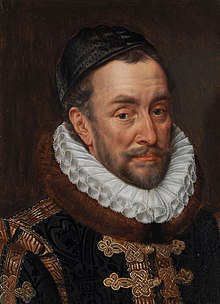Tuesday’s lecture covered the Dutch Golden Age, which included
the art and culture of the Netherlands in the 17th century.
Afterwards, we visited the Frans hals Museum and the Rijksmuseum, both of which
had Dutch art of the Golden Age.
I was interested in how people function in society. The
aristocrats have the most influence in the political system because they
claimed to be different from the rest of the people since they were born into a
wealthy and more educated family. However, they had financial problems, so they
turned to the merchants for more money. Since the aristocrats worked with the
merchants, the merchants demanded liberties and rights in return, so the social
system favored businessmen. This sudden favoritism for businessmen had me
realize how much power people can acquire if they have the right connections
and popular support. What happens to the other people who do not have the right
connections and support? I don’t think they are any different from the people
who were born with a silver spoon in their mouths, except for the fact they
have more money, material possessions and perhaps a skewed vision of society
and life.
 |
| Figure 1: William of Orange, the founding father. |
An aspect of 16th century Europe that struck me
is how society used religion to justify their actions. The Pope, who represents
God’s will, crowed Charles V so going against his authority was seen as going
against God’s authority. From there, it was interesting to see how Erasmus and
Luther lead the reformation so that Christianity would no longer be used to
control political power, but instead used for the church. A civil war started
when Philipp II succeeded his father, Charles V, and started the Inquisition,
where anyone who supported Protestantism or were protestant themselves was
persecuted. Eventually, William of Orange started the civil war, because he and "his fellow nobles felt that the autocratic directives from Spain trampled on their traditional liberties and privileges. Morover, they also began to resent the religious persecution which the devoutly Catholic King Philipp II imposed on the Netherlands to quell the spread of Protestantism (63)." The civil war divided the low countries into two parts: northern and southern. The
north was a land of freedom, but the south was still owned by Spain, so everyone
there had to be Catholic. I find it interesting how people can use religion to
justify one’s reasons for using power and as a factor to unify the people in a
certain region. I can agree that people can be unified when worshipping the
same God, but I don’t understand why people use religion to justify their power
and the choices they make. How can one say that what they are doing is God’s
will? Who can say what God’s will is? People claim that the Bible is the word
of God, so why not actually seek God’s will in the Bible instead of interpreting
God’s will with their own, personal opinions and knowledge?
I appreciated today’s lecture on Dutch art and how Dutch
artists paint scenes showing the reality of life, unlike the Italians who paint
imaginary ideas of life. There is no happily ever after in the real world. A
lot of Dutch art show the vanity of life and how life is short such that any
form of beauty or happiness will disappear at any time. I found this amusing because
in the book of Ecclesiastes, King Solomon mentions how nothing is new under the
sun and how everything he works for is vanity because all the wealth and riches
he acquires won’t follow him when he dies. The focus of Dutch art on the vanity
of life and how Ecclesiastes mentions how nothing is new under the sun provides a link between the Bible with Dutch art, which tells me a little bit of how close the
Dutch were to the Bible back then. I didn’t see too many Dutch paintings
reflecting the vanity of life in the museums, but I did see paintings of
peasants and scenes from everyday life. In the Frans Hals Museum, I saw many
paintings of Christ going to the cross or being persecuted by people
surrounding him. I didn’t see any paintings concerning his resurrection or what
happens after he rose from the dead, which fits in with the Dutch theme of
looking at life with a more negative perspective, seeing the reality of life
with death. Perhaps if the people looked at the whole story of Jesus’ life,
they might have been able to find some hope in life through Christ rising from
the dead, and thus conquering death.
No comments:
Post a Comment